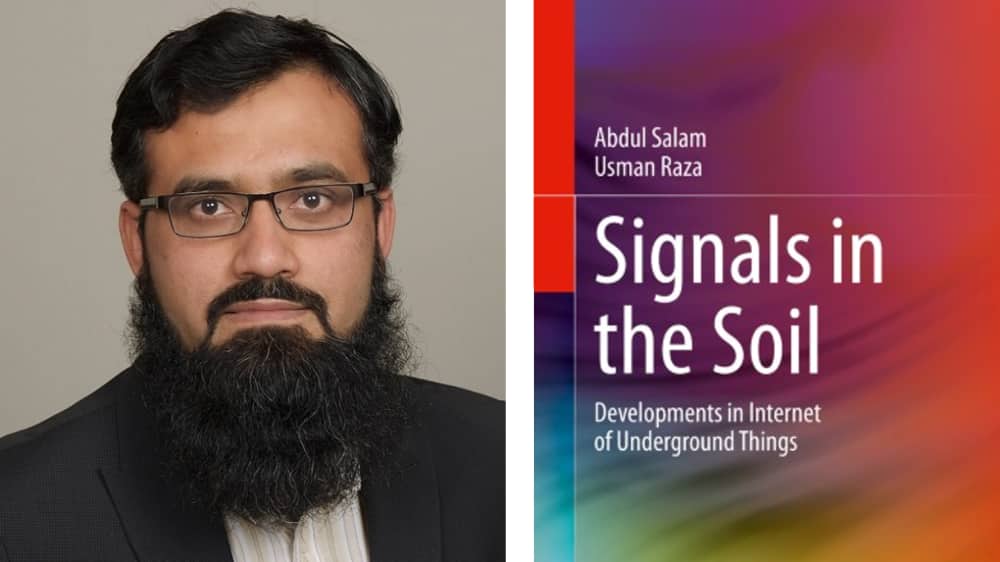 A professor and graduate student in Purdue Polytechnic’s Department of Computer and Information Technology published a new book.
A professor and graduate student in Purdue Polytechnic’s Department of Computer and Information Technology published a new book.
Abdul Salam, assistant professor of computer and information technology, and Usman Raza, a graduate teaching assistant, wrote “Signals in the Soil: Developments in Internet of Underground Things.” The book provides in-depth analysis of the most recent developments in the field of wireless underground communications, covering both theoretical and practical perspectives.
Salam and Raza explore novel applications of Internet of Underground Things in digital agriculture and autonomous irrigation management domains. They also look to the future, writing about developments in subsurface sensing and antennas in the soil medium.
“We wanted to explore both existing technologies and others that are currently being developed,” said Salam.
Researchers in academia, including faculty and students, as well as professionals in the agriculture industry will find useful information in the book, Salam said.
“Lack of in-situ site-specific measurements of biological, chemical, and physical properties of soil hinders the knowledge of dynamic soil changes,” said Salam. “Currently, these properties are being measured by either laboratory method using soil samples from the sites or soil models to predict soil states. However, these methods are based on limited data and unreliable assumptions. Therefore, it is important to develop sensing systems which provides advancement in detecting spatio-temporal dynamic soil changes. The sensor systems must have the capabilities to operate sensor, communicate wireless data being generated from the sensor, integration with other available information, generate analytic to observe spatial and temporal properties of managed and unmanaged soils.”
Salam believes that skills from different domains, such as biological, atmospheric, hydrological, biogeochemical, geological sciences and engineering, can be combined for assessment, monitoring of functional and sustainable soil. Furthermore, the sensors system will need advanced ground penetration, data transmission, dynamic modeling, data analytics, and visualization tools.
“It is vital to utilize underlying soil capabilities to its full extent using sensor and modeling systems. To that end, collaborative effort from interdisciplinary researchers, the scientific community and funding agencies is required to develop advanced sensors, sensing systems, wireless communication systems, soil models and cyber-physical systems for complex problem solving through education and outreach,” said Salam. “Soil has billions of organisms which initiates chemical, biological and physical processes required for fiber and food production, growth of the plant and removal of contaminants from water, hence, an integral component of an efficient farming ecosystem.”
“Signals in the Soil” is available from the publisher and Amazon.
